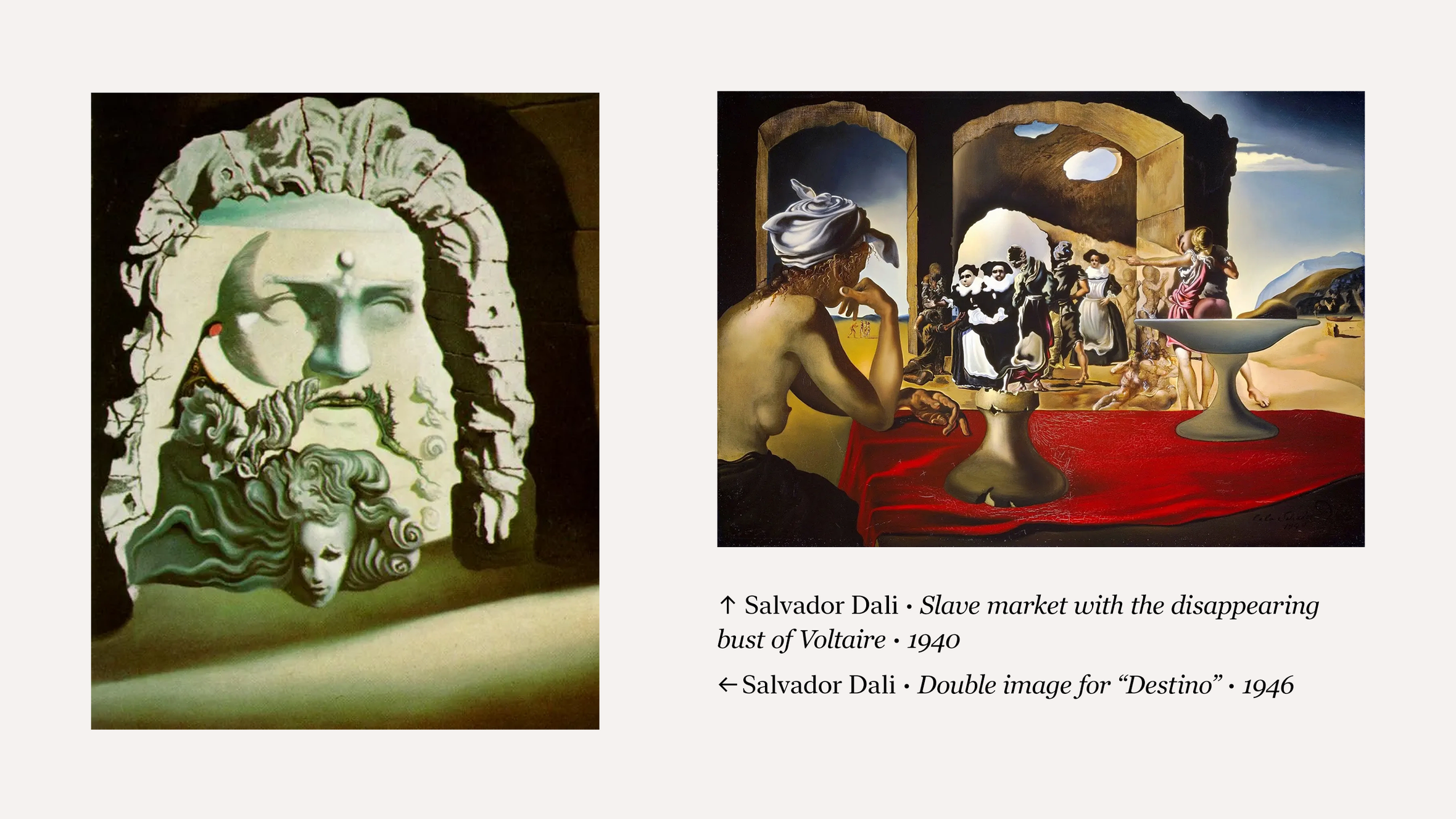Focal point, Figure–Ground
How many key elements can exist within a single composition?
All the elements in a composition should adhere to both the visual and semantic hierarchy. The primary image or narrative within a graphic composition is referred to as the focal point. In numerous instances, it is straightforward to identify the central figure or main character within graphic compositions.

The same applies to works of fiction. The main character is clearly defined in J.K. Rowling’s Harry Potter series. However, in other stories, it may be challenging to pinpoint a single character as the sole protagonist. Take, for example, Justice League. In this narrative, the importance of Wonder Woman’s role is on par with Batman’s, while Superman also holds significant prominence. Thus, all graphic compositions have main and secondary elements, but there can be several main elements.
While graphic design works differ in structure from movie plots, it can still be challenging to determine the evident “main character” or focal point. For instance, imagine you are tasked with designing a character selection interface for the game “Cyberpunk 2077”.
In such a graphic composition, both characters should ideally be perceived equally significant by default.

Frequently, the designer encounters the challenge of balancing the roles of characters instead of emphasizing a single character. For instance, when presenting a list of media partners at a conference, they must all be perceived as equals within their group:

Similarly, products displayed on a shelf in an online store should be given equal prominence:

The same applies to individuals in a group photo:

Focus of attention
While a work may feature multiple main characters, similar to centers in a graphic composition, individuals do not perceive them all simultaneously.
It is inherent in our nature that our eyes tend to focus on one thing at a time. This phenomenon is commonly referred to as the focus of attention.
Due to this inherent limitation, filmmakers must separate storylines and present them individually, distinct from one another.
Graphic designers also encounter a similar peculiarity of perception of their work: individuals tend to focus on one thing at a time. While a director can utilize editing techniques to highlight specific storylines, graphic designers rely on the composition space and its elements.
Consider this billboard as an example:

This is a typical composition for outdoor advertising. It features two focal points: text on the left and a graphic image on the right. These elements enhance the composition and are designed to be more expressive.
In Gestalt, the focused center of the composition is known as the figure, while the remaining elements become the background. This aspect of perception can significantly alter the overall meaning of the composition.
Figure–Ground
In graphic design, it is not uncommon for the same object to change in meaning and concept based on what the viewer is focusing on.
An example of this can be seen in René Magritte’s renowned painting “The Treachery of Images,” where a pipe is positioned at the center of the composition.

The French inscription below it reads, “Ceci n’est pas une pipe,” which translates to “This is not a pipe.” The artist cleverly plays with the viewer’s attention, as most individuals initially perceive the pipe as the main element, but as the focus shifts to the inscription, the entire meaning of the artwork undergoes a transformation.
Sometimes, a work of art can have multiple meanings.
A good example is this image, printed on a German postcard in 1888. It contains two different pictures in one, which reveal themselves depending on what the viewer focuses on:

Some people see the profile of an older woman, while others see a young girl standing half-turned to us. Both images coexist within the same strokes, and which image you perceive depends on where your focus lies.
Salvador Dali and Maurits Escher fondly employed similar techniques in their artworks.


And many graphic designers follow this principle when crafting logos.

In conclusion
Thus, the focal point of our perception can give an additional interpretation to a specific element within the composition.
Working with groups of elements, in particular, offers numerous possibilities for visual interpretation. You can assign additional significance by manipulating the viewer’s gaze and encouraging them to perceive elements as cohesive groups.
In our upcoming article on Gestalt laws, we will delve into the specifics of these techniques.





